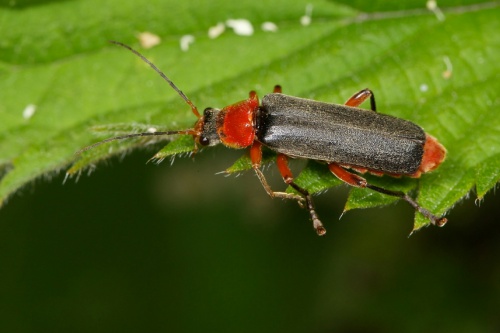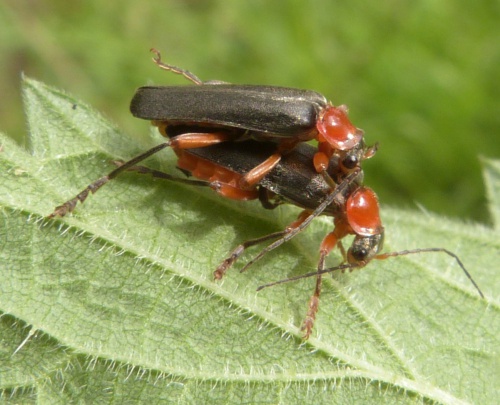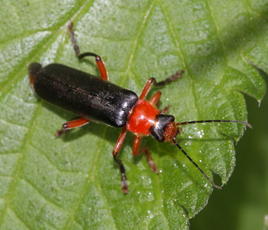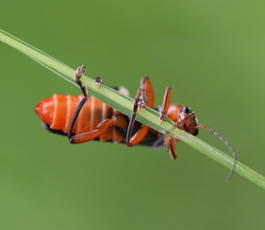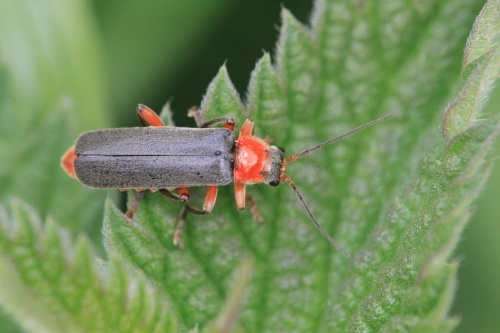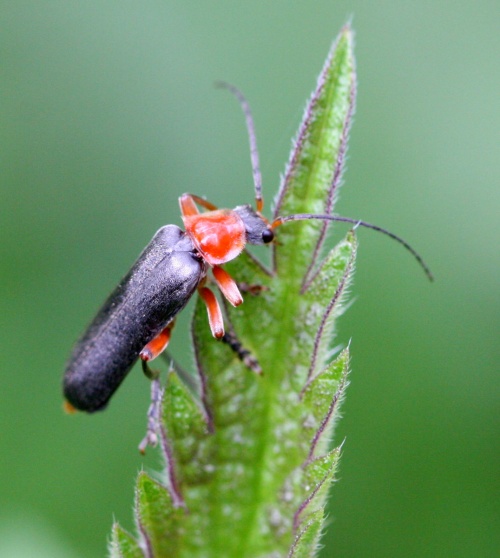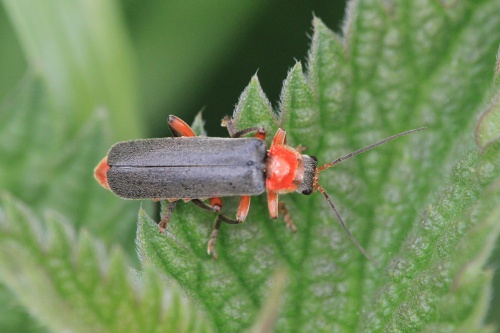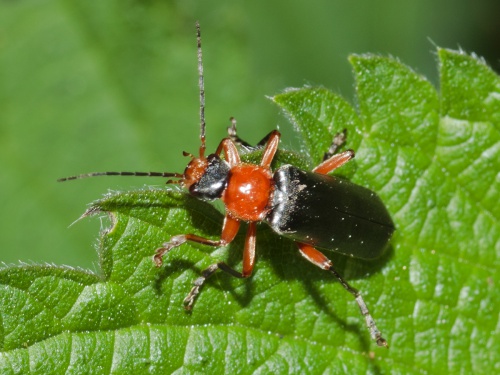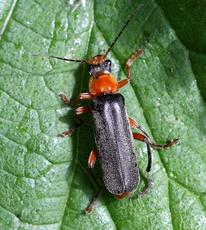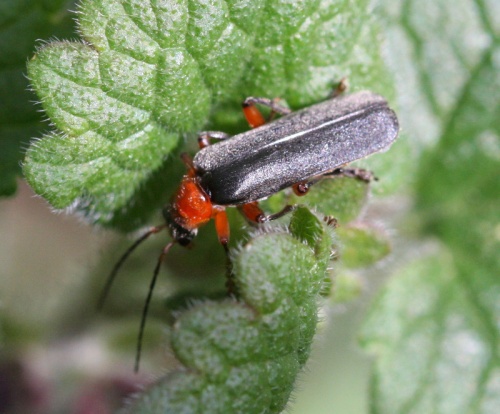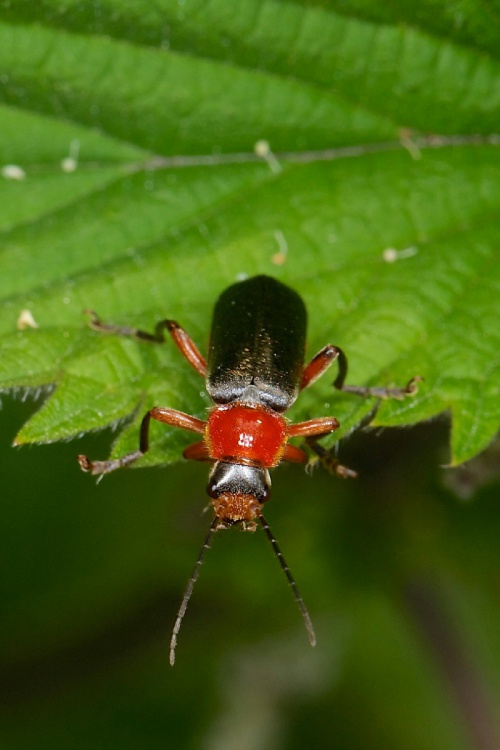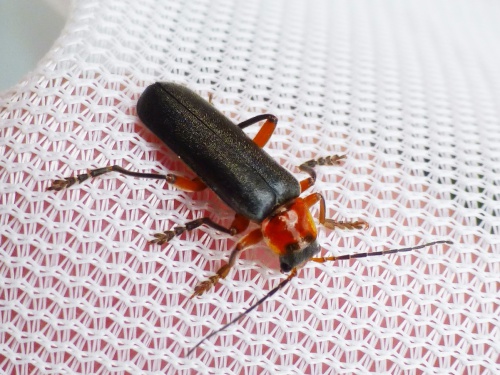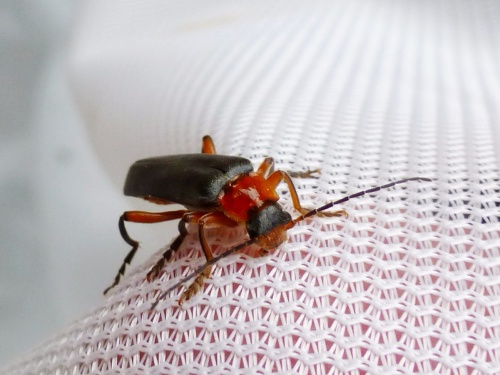Cantharis pellucida
9-12mm. Dark to black elytra and an all-orange/red pronotum. It has thin bands at the tip of the hind femora and typically with dark mid-tibia.
Cantharis nigricans has broad black bands at the end of the femora and overall has a duller and more yellowish appearance.
Your specimen should have these features:
- 9-12mm
- a narrow black band at the tip of the hind femora
- orange/red pronotum, evenly coloured
- typically with dark middle tibia
- abdomen is bright orange (but not easy to see in live specimens)
Hedgerows and meadows. They are frequently found on open flowers such as Hawthorn and umbellifers where they feed on both nectar and pollen as well as predating other small insects.
Early May to July
The larvae are like velvety caterpillars and they feed on the ground, hunting snails and other small creatures.
Common throughout most of Britain
Fairly common in Leicestershire and Rutland.
Leicestershire & Rutland Map
Enter a town or village to see local records
MAP KEY:
Yellow squares = NBN records (all known data)
Coloured circles = NatureSpot records: 2020+ | 2015-2019 | pre-2015
UK Map
Species profile
- Species group:
- Beetles
- Kingdom:
- Animalia
- Order:
- Coleoptera
- Family:
- Cantharidae
- Records on NatureSpot:
- 44
- First record:
- 31/05/1997 (Derek Lott)
- Last record:
- 27/06/2023 (axon, kaye)
Total records by month
% of records within its species group
10km squares with records
The latest images and records displayed below include those awaiting verification checks so we cannot guarantee that every identification is correct. Once accepted, the record displays a green tick.
In the Latest Records section, click on the header to sort A-Z, and again to sort Z-A. Use the header boxes to filter the list.


